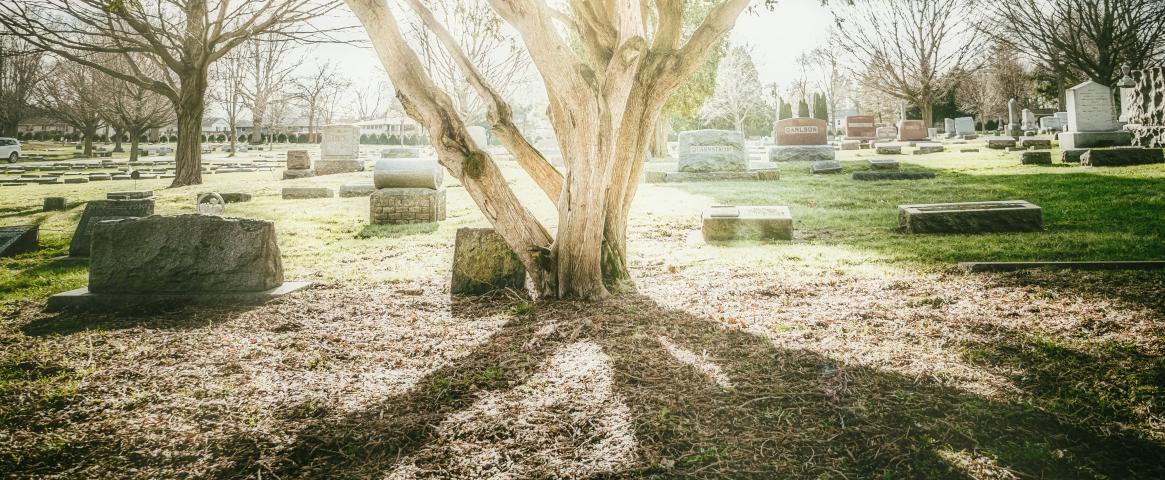By Alia Sajani. Mentored and edited by Sara Reardon.
A movement is growing to atone for the erasures of mass human deaths during massacres, wars and other events whose true toll is only now being unearthed by forensic and anthropological studies of burial sites.
Both in the United States and internationally, mass deaths resulting from historic and ongoing humanitarian crises have led to the burials of thousands of unidentified people. These people do not receive proper funerals or grave markings, and their families are not notified of their deaths.
“People fall through cracks as though they never existed,” says Kate Spradley, an anthropologist at Texas State University.
A lack of recordkeeping and DNA sample collection from the dead makes it difficult to connect families. At a Feb. 19 session at the annual meeting of the American Association for the Advancement of Science, Spradley and other experts called for policy changes to increase the chance of reuniting families with their deceased relatives.
In 2020, President Joe Biden signed the Missing Persons and Unidentified Remains Act – the first piece of legislation to acknowledge migrants who lost their lives near the border due to the harsh climate and terrain. But efforts to fund forensic laboratories that can identify the remains have yet to be realized.
Yet Spradley says that this act is just a “band-aid.” Instead, she calls for the training of medical examiners who can thoroughly make identifications, as well as a transnational database to ensure that DNA collection can help match the dead with their families and repatriate their remains.
Erasure of cemetery records presents an additional challenge. During the Tulsa Race Massacre of 1921, white residents burned, looted, and destroyed homes and businesses in the city’s Greenwood District: an affluent and thriving segregated Black community. The violence resulted in approximately 300 deaths and 5000 people becoming homeless.
Anthropologists studying the massacre currently rely on newspaper records and excavations of mass graves in segregated burial grounds to determine the extent of the deaths. But Phoebe Stubblefield, lead forensic anthropologist for the Tulsa Race Massacre Investigation and a researcher at the University of Florida, is now collecting DNA from the bones of exhumed individuals to map out the cemetery, which may provide clarity and closure to the victims’ descendants. She calls for Congress to enact the currently stalled African American Burial Grounds Study Act, which would study ways to preserve such areas.
The same pattern of discrimination against the victims of mass deaths happens across the world. The civil war in Northern Uganda which ran from 1986 to 2006 resulted in the deaths of an estimated 100,000 people. At the conflict’s height, some 1.7 million people were displaced to government-run camps. Now, as Ugandans return to the lands they previously lived in and farmed on, they frequently find the remains of victims who were never adequately buried.
Trisha Redeker-Hepner, an anthropologist at Arizona State University, studies how improper burials and the erasure of deaths have led to social, spiritual and economic unrest in Uganda that is now being passed down through generations.
Redeker-Hepner says that transitional justice policies could help provide reconciliation to the Ugandan people. Such policies, which the country’s government has drafted, will financially support the costs of exhuming the dead and give the victims a proper burial in their homeland. But she says that making such changes will require political will.
Alia Sajani is pursuing a doctoral degree in immunology at Dartmouth College, where she is studying the processes that keep the immune system from attacking the rest of the body. She has written for the NIH Catalyst and ImmunoBites blog. Sajani is passionate about diversity and inclusion in science. You can find her on Twitter @AliaSajani.
Image: People killed in massacres, wars and other events involving mass deaths are often buried in unmarked graves, making it difficult to identify and repatriate their remains. Credit: Kevin Andre, Creative Commons

